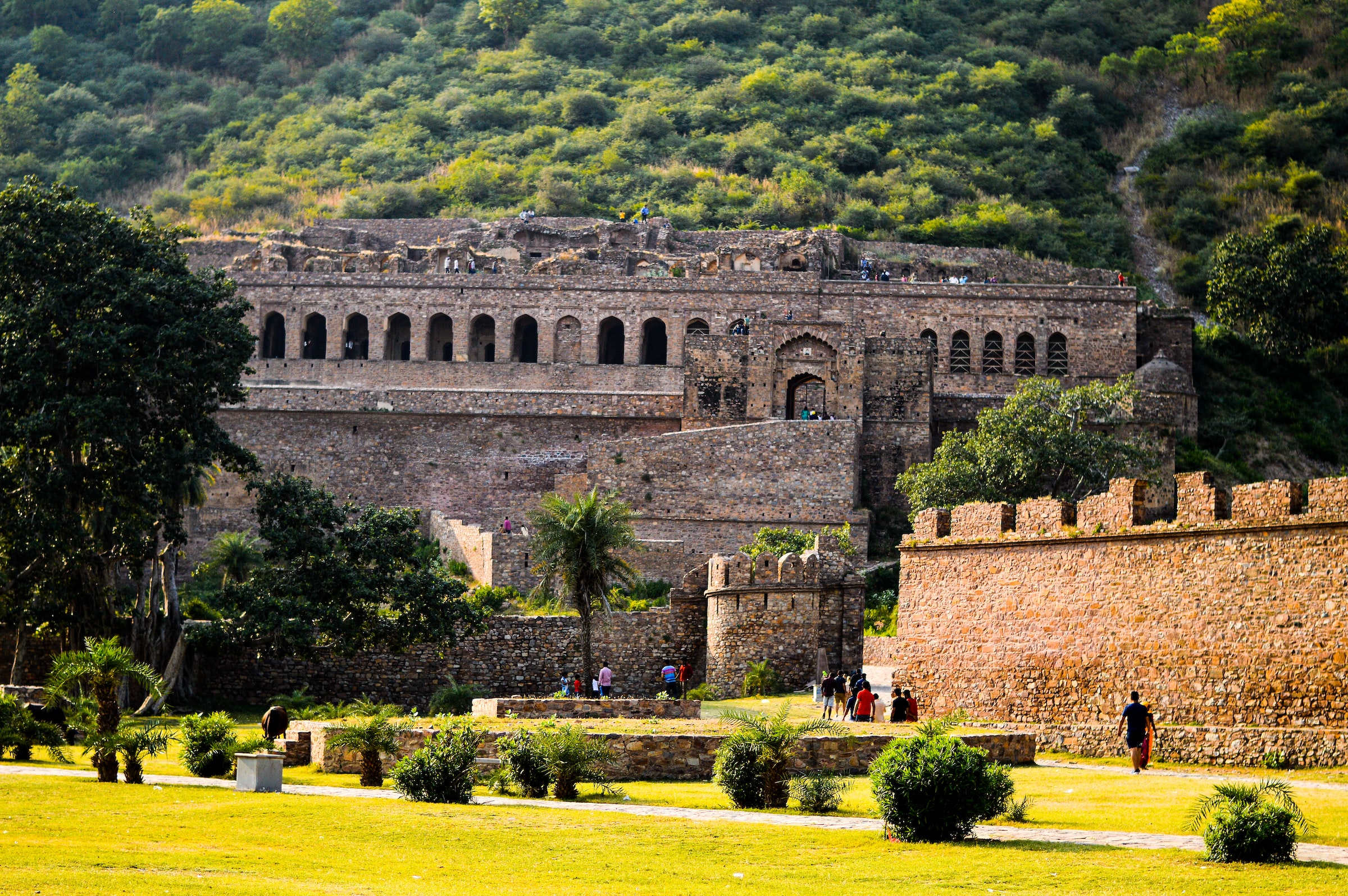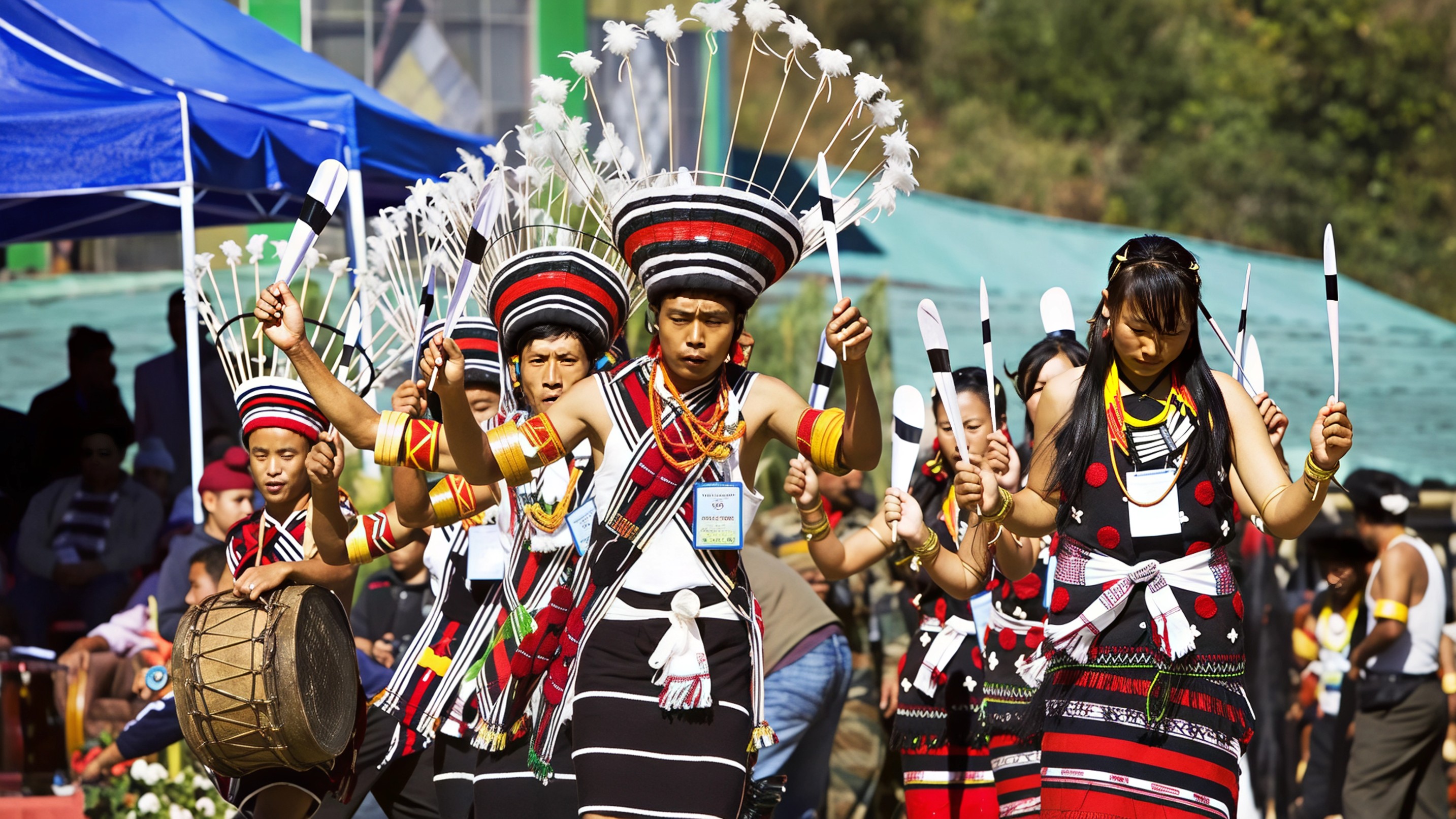Where History Meets Legend
Tucked between Jaipur and Alwar in the rugged folds of the Aravalli Hills lies Bhangarh Fort, a 17th century stronghold that has become a magnet for both history lovers and thrill seekers. Known as the country’s spookiest landmark, its deserted bazaars, roofless havelis, and ruined palace whisper tales of glory and tragedy. Even without its supernatural reputation, the fort’s majestic architecture and rich past make it an unforgettable destination.

The Curse of Baba Balu Nath
One of the most enduring legends of Bhangarh speaks of Baba Balu Nath, an ascetic who once lived on the land. He allowed Raja Madho Singh to build the fort on the condition that its shadow must never touch his dwelling. For years the rule was honoured until later rulers raised the walls higher. When the fort’s shadow finally fell upon his retreat, the curse was unleashed. From that day forward, locals believe no roof could ever remain intact within Bhangarh, and every attempt to rebuild them failed.
The Tale of Princess Ratnavati
Another haunting story is tied to Ratnavati, the princess of Bhangarh, famed for her intelligence and beauty. A tantric magician, enchanted by her, tried to trap her with a love potion disguised as oil. Sensing the trick, she hurled the potion onto a stone, which crushed the sorcerer as it rolled down. With his dying breath, he cursed the fort, declaring doom for its people. Not long after, the kingdom fell to invaders, its residents massacred, leaving only ruins and stories of the princess’s wandering spirit.

Walking Through the Ruins
Stepping through Bhangarh’s massive gateways feels like entering a forgotten world. Ancient temples dedicated to Gopinath, Someshwar, Mangla Devi, and Hanuman still stand in quiet dignity, while broken bazaars stretch out in eerie silence. The Nartakiyon ki Haveli or House of the Dancing Girls, with its fading arches, offers a glimpse into lost grandeur. At the heart of it all rises the royal palace, once seven storeys tall, now only four, its terraces offering sweeping views of the valley—majestic yet melancholic.
The Paranormal Pull
Even in daylight, Bhangarh feels otherworldly. Visitors often report strange occurrences—phones switching off, sudden chills, or the unsettling sense of being watched. Shadows flit at the corner of vision, whispers float through the still air, and silence hangs heavy. The Archaeological Survey of India has even placed a notice at the gate, forbidding entry before sunrise and after sunset. Officially, it is for safety reasons, but for many, it only fuels the belief that the fort belongs to unseen forces after dark.

Planning Your Visit
Bhangarh Fort is open from 6 AM to 6 PM, and entry after sunset is strictly prohibited. The best time to visit is between November and February when the weather is cool and the fort’s eerie aura feels even more atmospheric. It is about 246 kilometres from Delhi and a three to four hour drive. Trains connect Delhi to Alwar or Dausa, while Jaipur International Airport is the closest for air travellers. Entry charges are minimal, and photography is allowed.
Beyond Bhangarh
Travellers often combine Bhangarh with nearby attractions. The Sariska Tiger Reserve is just 50 kilometres away, offering wildlife safaris amid rugged landscapes. The ruins of Ajabgarh Fort provide another layer of mystery, while Chand Baori at Abhaneri—one of the deepest stepwells in India—showcases extraordinary medieval craftsmanship.
Haunted or Historic
Whether you believe in curses or dismiss them as folklore, Bhangarh Fort is more than a ruin. It is a place where myth and history blend seamlessly, creating an atmosphere that is as unsettling as it is captivating. For some, it is simply a monument of architectural beauty. For others, it is a reminder that the past never truly lets go. What is certain is that Bhangarh leaves an impression that lingers long after you step outside its gates.
Follow Travel Moves on Instagram and Facebook for more heritage stories, travel guides, and adventures from India’s most intriguing destinations.








